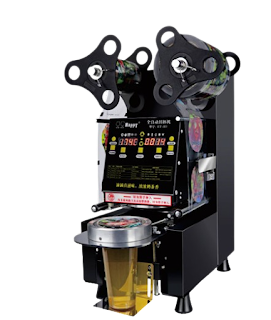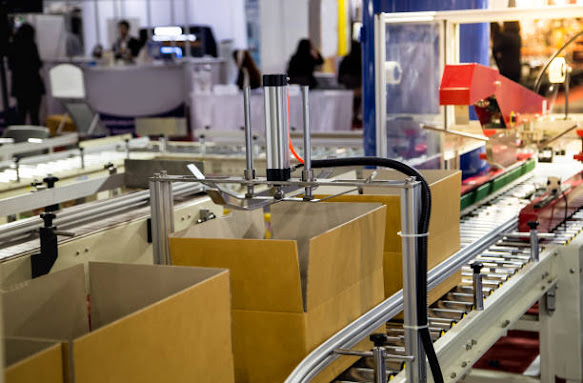Who Provides the Best Vacuum Packaging Machine?
Food storage continues to evolve. In October 2025, more people and businesses will rely on machines that preserve freshness, cut waste, and reduce space. Choosing the right vacuum packaging machine now matters more than ever.
Whether storing meat, vegetables, grains, or snacks, users want sealed packages that hold longer and look neat. A modern machine gives exactly that — clean results with less effort. This article explores how to choose the best machine for your needs, what to expect from different models, and what features make a food vacuum sealer worth the investment.
Why Vacuum Packaging Matters More Than Ever?
Food loses freshness fast when exposed to air. Moisture creeps in. Flavours fade. Bacteria grow. A strong vacuum seal locks out air and moisture, making food safer and tastier for longer.
In 2025, food costs keep rising. So, smart users try to stretch every bite. Restaurants, shops, and homes all turn to vacuum sealing for better control and less spoilage.
A vacuum packaging machine takes air out of a bag and seals it tightly. This simple action changes how food stays on shelves or in freezers. It slows down decay and saves space.
Core Features to Look for in a Sealer
A basic machine may seal bags, but a top model does much more. To find the best vacuum packaging machine, study these key traits:
- Seal Strength: Strong, even pressure stops air leaks.
- Bag Size Support: Some machines take only small bags. Others fit wide sizes.
- Speed: Fast cycles help in large kitchens or factories.
- Built-in Cutter: This trims bags to size, reducing waste.
- Cleaning Ease: Machines with smooth, open surfaces clean faster.
- Noise Level: Quiet motors suit small spaces.
With these, users choose tools that match pace, purpose, and place.
Types of Vacuum Sealers Available
Vacuum sealers fall into three main types. Each suits a different job size and setting:
1. Tabletop Sealers
- These sit on kitchen counters. They suit homes, cafés, and small shops. Most work with pre-cut bags and run one cycle at a time.
2. Chamber Machines
- These hold the food and bag inside a chamber. They seal faster and allow liquid-rich foods. Most restaurants and food factories pick this kind.
3. Handheld Sealers
- These work with zip-lock vacuum bags. They don’t suit long-term storage but help in travel or small batch use.
How a Food Vacuum Sealer Works?
A food vacuum sealer draws out air, then fuses the plastic shut. First, you place food inside a bag. The machine closes its lid or clamps on the edge. A motor sucks out air. Once the bag flattens, a heated strip seals it tight.
Some models allow you to adjust seal time, especially useful for moist foods. Others have a pulse setting, so you control pressure manually.
Many now also offer extra options — like marinating, container sealing, or jar lids. But for most, the goal stays simple: less air, more life.
Signs You Need a Better Machine
Users often keep using the same tool for years, even when it falters. Look for these signs to know if you need an upgrade:
- Bags unseal after a day or two
- Seal line looks wrinkled or thin
- The motor makes strange noises or heats up
- You waste time sealing too many small bags
- Liquids spill during use
Upgrading to a modern vacuum packaging machine solves many small problems at once. It helps your process run smoother, cleaner, and faster.
Where to Place the Machine?
Space shapes function. Place your machine where you can seal, bag, and move easily. In homes, keep it near cutting boards or fridges. In larger kitchens, set it on a stable table near prep areas.
Leave space behind and around the machine. This avoids blockages and overheating. If possible, avoid wet spots, sharp corners, or overhead clutter. A dry, open area with good lighting helps every seal succeed.
What to Seal and What to Skip?
Most dry and solid foods seal well. Meat, fish, nuts, grains, coffee, cheese, and dried fruits all suit vacuum packing. Some moist foods may need extra care — like freezing first or using paper layers.
Avoid sealing:
- Soft bread (gets crushed)
- Fresh mushrooms (release gas)
- Raw garlic (can ferment)
- Hot food (steam weakens seals)
Let hot items cool fully. Cut sharp bones or edges. Always dry the outside of the bag before sealing. These habits protect both the food and the machine.
Cleaning and Care Tips
Clean your sealer after each use. Wipe surfaces, clear crumbs, and wash removable parts if your machine has them. Never let food bits build up near the seal strip or motor vents.
If your sealer uses oil (some chamber models do), check levels monthly. For others, inspect power cords and fans twice a year. Proper care makes your food vacuum sealer last longer and work better.
Future Trends in Vacuum Sealing
By October 2025, machines will keep changing. More now run quieter, take less power, and fit smarter into shelves and carts. Some models now pair with apps, alerting you when maintenance is due.
You may also see sealers that track food dates, pair with QR codes, or print details onto bags. These trends help reduce food waste and improve storage flow in busy places. Still, the core idea stays simple: remove air, seal tight, store longer.
How to Compare Machines Before Buying?
Before choosing a machine, gather these details:
- Bag size range
- Seal width and power
- Operating noise
- Cleaning steps
- Safety shut-off
- Food-safe materials used
Also, think about how many items you plan to seal each week. Do you need batch sealing? Travel use? Liquid control?
A slow, weak machine will slow you down. A strong, easy-to-clean one boosts your routine.
Common Mistakes to Avoid
Many users make small errors that hurt machine life or waste food. Avoid:
- Overfilling bags
- Sealing wet bags
- Letting air slip inside
- Ignoring strange noises
- Storing the machine in damp spots
These small habits add up. Stay alert, and your sealing process stays smooth.
Should You Replace Bags or Reuse Them?
Most bags sold for sealing can handle two or three uses — if cleaned well. Always check for holes, creases, or melted spots. Avoid reusing bags that once held raw meat or fish.
To save money and reduce waste, choose strong, multi-use bags. Some newer machines now accept rolls that let you cut bags to any length.
Rinse, dry, and store bags in a clean drawer for next use.
Final Word
Choosing the best vacuum packaging machine depends on what you seal, how often you use it, and where you work. A home user sealing leftovers needs a different model than a deli packing daily meals.
Strong machines do more than seal — they help organise kitchens, reduce spoilage, and store more in less space.
A good food vacuum sealer matches your rhythm. It runs smoothly, seals fast, and doesn’t fail when you need it most. With clear plans, smart care, and a machine that suits your setting, vacuum sealing becomes not just a task — but a tool that shapes how you store food every day.
FAQ’s
1. Why should I buy a vacuum packaging machine in October 2025?
October 2025 offers seasonal sales, technology upgrades, and bundle promotions. Buyers can secure advanced machines with better sealing power, energy efficiency, and accessories at discounted prices.
2. What features define the best vacuum packaging machine?
Key features include strong suction, fast sealing, compatibility with different bag sizes, stainless steel durability, and advanced options like digital controls or multi-seal modes for professional use.
3. Are there different types of vacuum packaging machines?
Yes. Options include chamber vacuum sealers for heavy-duty use, external sealers for home kitchens, and portable handheld models for convenience. Each suits different packaging needs and budgets.




Comments
Post a Comment